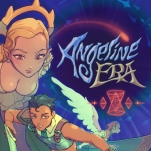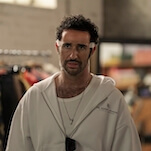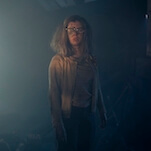What does it actually mean for a video game to be "horny"?
Between the T&A cardboard cutouts of Stellar Blade and the safe and siloed sex scenes of Baldur's Gate 3, real horniness in games is hard to find.
Images: Stellar Blade (Sony Interactive Entertainment), Hades (Supergiant Games), Baldur's Gate 3 (Larian Studios)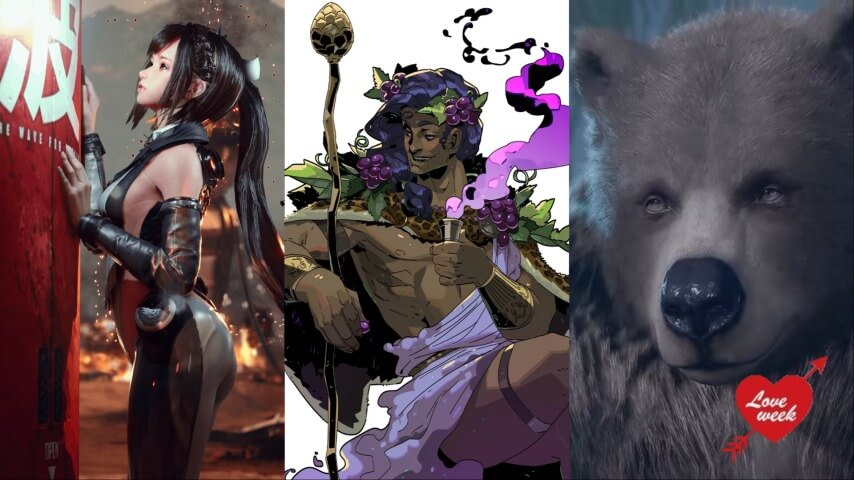
What makes a video game “horny”? Surely, it doesn’t simply require an outright depiction of sex. But it seems silly to suggest that handsome and/or scantily clad characters are enough, either. If they were, fighting games would be obvious candidates, with massive personalities and physical clashes at their heart (Fellas, is it gay if we are both guys and fight in a Chun-Li mirror match?) But they obviously don’t, in any explicit terms, deal with sex. Along those lines, but with significantly less charisma, are the ilk of 2024 character action game Stellar Blade, which features a “sexy” female protagonist as an object of player control. Games like Hades and Baldur’s Gate 3, meanwhile, have been presented as clear alternatives: They feature explicitly queer characters, a greater diversity of attractive designs split between men and women, and innuendos aplenty. But they also can’t venture into the waters of genuine eroticism, featuring only glimpses of skin and fade-to-black sex scenes. These games represent a binary of how we talk about sex in games. Everything is caught between the objectification of Stellar Blade and the “proper” horniness of Hades or Baldur’s Gate 3.
Let’s start with Stellar Blade, a classic example of video game “eroticism.” It pulls on the designs of T&A-heavy games like X-Blade and Tomb Raider (albeit with less charm than Lara Croft’s pinup girl energy). The protagonists are meant to be looked at, not identified with. A couple of articles groused, when the game came out, that it was impossible for its main character/primary eye candy, robotic warrior Eve, to be a sexy character because she has such a slight personality. But this is exactly the point: A shell with a “perfect” body is more than enough to land as sexy for many men. All that bothersome talk and personality would just get in the way. In practice, blank characters like Eve can work in more complex ways. Women can, and have, identified with them. Far too often, though, this line of critique results in a prudishness about showing skin, or worse, around “overly sexual” female forms. But those things don’t actually contradict the basic feminist critique: Perhaps even sexy women should be more than objects.
As for the other side, Baldur’s Gate 3 and both Hades games have received outright and exaggerated praise for their handling of sex. It would be reductive to say these games are not horny. However, their actual eroticism is threadbare. Baldur’s Gate 3 is an RPG based on Dungeon & Dragons. In it, you construct a character and go on a swashbuckling adventure with a party of other heroes, battling your way through a dense fantasy world. Hades concerns the son of the titular god, Zagreus, who attempts to escape the underworld. With each attempt, he gains new power, enabling him to further ascend through each layer of death. In short, both are games principally about violence and power, which also feature romantic relationships and friendships.
These games are not about sex. They feature both those things, but they are side tracks, optional distractions (even if BG3’s cast does want to jump your bones all the time). BG3’s horniness is isolated to one-off lines and individual scenes. It is, admittedly, rare for a game to allow sex with a human transformed into a bear, or for characters to luridly cheer on the main character as a priest whips them. However, beyond these surface touches, Baldur’s Gate 3 does not explore its world’s sexual mores. Its characters lack explicit sexual orientations. Its romances have less friction as they go on, starting prickly but becoming secure over time. It’s difficult for them to capture the actual push and pull of romance, much less sex.










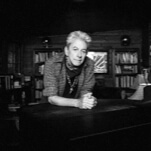



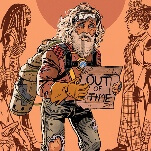








![Rob Reiner's son booked for murder amid homicide investigation [Updated]](https://img.pastemagazine.com/wp-content/avuploads/2025/12/15131025/MixCollage-15-Dec-2025-01-10-PM-9121.jpg)





